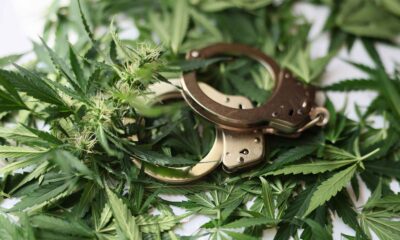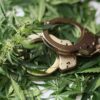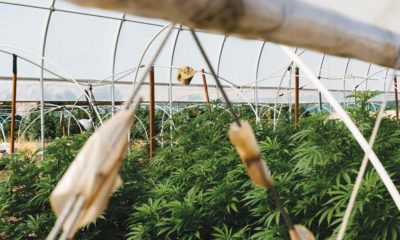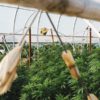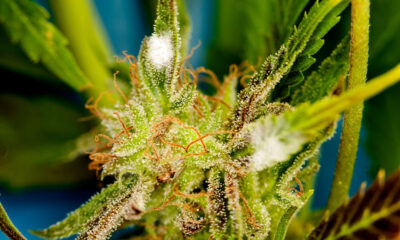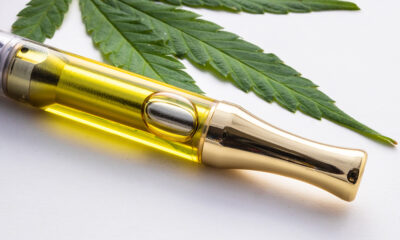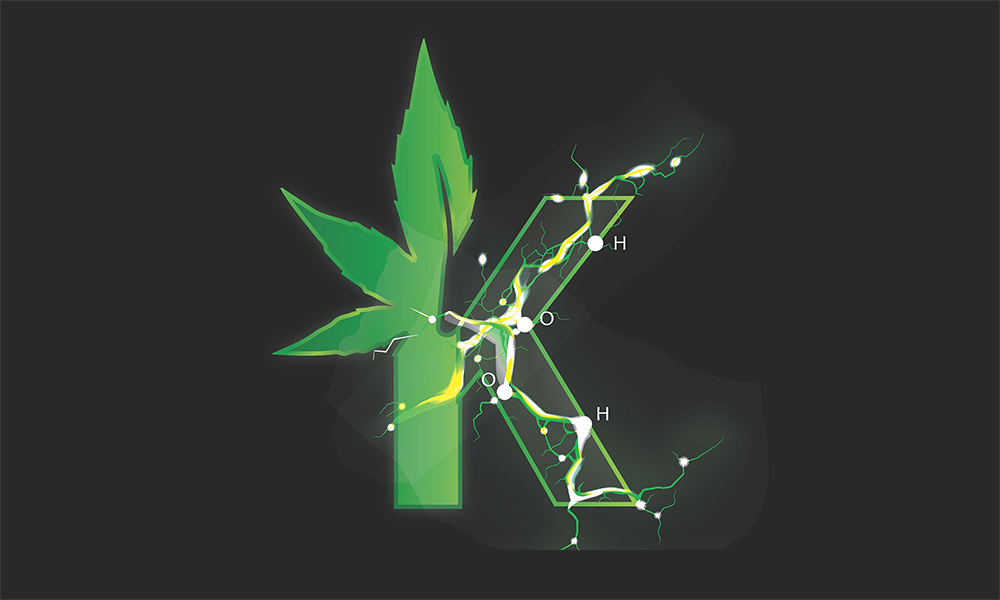
Sponsored
Decontaminate Your Cannabis Cultivation Facility
Canna Klean & Remediation sheds light on getting to the root cause of repeated lab test failures, understanding the source of cannabis contamination issues, and the importance of decontaminating even the cleanest of cultivation facilities.
With cannabis lab testing becoming increasingly stringent, it’s more important than ever for cannabis companies to operate in clean cultivation facilities that have been professionally decontaminated. And while there are many mold remediation companies out there, very few have developed a process that can be safely used around cannabis. Thankfully, one business—Canna Klean & Remediation—is filling this need.
Headquartered in Massachusetts, Canna Klean & Remediation is merging cannabis cultivation practices with commercial decontamination and remediation techniques so that cultivators can rely on a healthy harvest. Flower is still the number one category positively impacting cannabis organizations’ bottom lines. Without collecting consistent data and using best practices to ensure the cleanliness of the environment, cannabis operators will fall victim to invisible enemies that compromise their ability to sell the flower they worked so hard to produce. Once consistent flower failures occur, there’s a downstream ripple effect that causes a company’s bottom line to begin hemorrhaging. Discovering the source and the root cause of why cannabis flower is failing lab tests, and acting to properly disinfect the problem, prevents the erosion of a cannabis operation’s bottom line.
Canna Klean & Remediation can help your facility identify and eliminate the issues that are causing your organization to fail lab tests. They utilize cannabis-compliant methods and chemistries, and custom-built negative air containment solutions, to safely decontaminate cultivation facilities with minimal interruption to staff and production.
Now, let’s dive deeper into just how this process works and why disinfecting cannabis facilities is critical for success.
Treat the Cause, Not the Symptoms
Consistently failing flower lab tests will make or break companies that are learning to navigate the extremely competitive marketplace that the cannabis industry has evolved into. Growing cannabis inside a “sick” environment is unsafe for both the end user and the people working inside of the infected building.
To combat repeated lab test failures, many cannabis companies are resorting to flower and product remediation techniques to pass lab testing to get their failing products to market. The flower and product remediation techniques that are widely being used are short-term solutions to a long-term facility problem that will continue to worsen over time. Discovering the source and root cause of the contamination is the only way to completely eliminate the problem rather than using a Band-Aid solution such as “cleaning” the flower with remediation techniques.
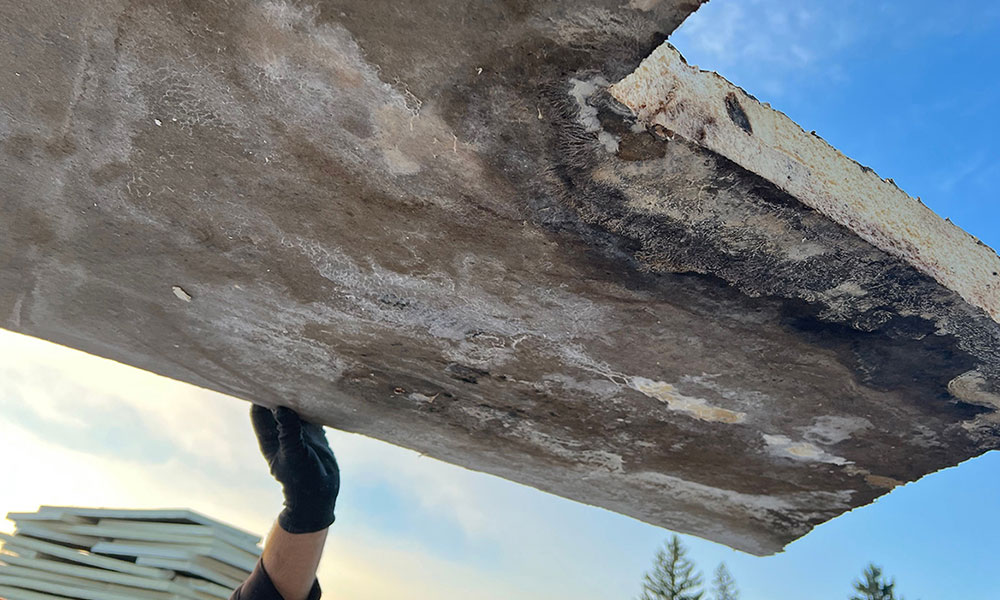
Contamination Mapping
Repeated failing flower is a major indicator that there’s either a process contamination issue or a facility contamination issue that’s reoccurring. Understanding a lab Certificate of Analysis (COA) and realizing that the flower is the number one indicator for reoccurring problems sets a cannabis organization up for success. Trending lab data will allow cultivators to see rising or falling levels of bacteria, microbials, fungus, yeast, mold and coliforms that are contaminating their crop.
Using scientific methods to map the contamination, speciate the source of the issue and locate the areas inside the facility that are housing the pathogens guides the facility to a targeted approach to eliminate the source of the contamination. Sick environments can happen to even the cleanest state-of-the-art facilities.
If a facility doesn’t discover and eliminate the source of the contamination, the source will continue to thrive and replicate at an astounding rate.
Cannabis cultivation facilities create a perfect environment for bacteria, mold and microbials to perpetuate themselves using common food sources such as plant matter, growing media and many kinds of building materials. The food sources are constantly being hit with excessive moisture levels due to plant transpiration and evapotranspiration, temperature fluctuations, foliar applications and high levels of air flow. This creates a perfect storm and the rapid perpetuation of colonies inside an indoor cultivation facility. Mold, bacteria and microbials are invisible enemies that even the cleanest of facilities fail to eliminate without professional help.
The importance of understanding the levels of bacteria, microbials, fungus, yeast, mold and coliforms inside a cultivation facility could mean the difference of getting 85-90% of all batches of flower produced to market vs. only getting 15-20% of all batches to market.
Matt Iarussi, COO of Canna Klean & Remediation, has been cultivating cannabis for 20 years, including three years as a head cultivator for an MSO. He understands the many ways a facility could be contaminating their crop and causing it to fail lab testing. Distinguishing between a process contamination issue and a building contamination issue is the first step in solving the problem.
Iarussi uses his cannabis cultivation knowledge to assist facilities in trending and understanding lab testing data while also reviewing cultivation, dry cure, processing and sanitation SOPs to evaluate them for contamination issues.
“Sometimes a facility is contaminating the flower with a part of their process that’s being overlooked. Often, it’s a poor sanitation practice being used as a best practice that’s causing the contamination of the flower. Another great example is incorrectly designed dry rooms with undersized HVAC/dehumidification systems creating a breeding ground for microbial contamination,” Iarussi says. “When the level of average harvested biomass moisture exceeds the load limitations of the HVAC/dehumidification system, the excess moisture left in the environment will become problematic, and the crop will not dry at the correct rate. To add to that issue, many facilities do not measure the water activity (WA) of the flower throughout the dry and cure process. When the WA is held at too high of a range due to excess moisture in the environment, mold and microbial colonies grow on the flower and cause the product to fail lab testing.”

Backed By Science
Canna Klean & Remediation starts the contamination mapping process by bringing in 3rd party non-biased Certified Industrial Hygienists (CIH) to biologically evaluate the facility. A report is generated by the CIH team documenting the species and the locations of the contamination. Canna Klean & Remediation works hand in hand with the CIH team to design a targeted approach to decontaminate the facility using a patent-pending 4-step process. Common issues can be found behind walls where mold and microbial colonies have taken hold of poorly selected substrates, ceilings where roof leaks have not been addressed where the moisture is feeding colonies, HVAC systems with no preventative maintenance cleaning plan, irrigation systems that are not being properly cleaned that are full of bacteria, growing media that is contaminated and perpetuating issues throughout flower rooms, etc.
Once a facility starts biologically evaluating areas that test positive for contaminants, light is shed on the root cause contributing to the flower not getting to market. Many facilities chase their tails and stay in a state of denial hoping their next round of COA’s will be passing. Instead of hoping for a miracle, let Canna Klean & Remediation help your facility identify and eliminate the issues that are causing your organization to fail lab tests.
Matt Short, Owner & CEO of Canna Klean & Remediation, has been in the mold & microbial remediation business for 20 years. He’s an expert in his field and created a compliant remediation process utilizing specific chemistries and techniques that can be used inside of cannabis cultivation facilities. Short’s process goes after the source and root cause of the contamination issue and is paired with scientific testing and data to pinpoint and eradicate the problem.
“We go after the source and root cause of the contamination issue working with Certified Industrial Hygienists (CIH) to locate, speciate and enumerate colonies in the facility. After our process is complete, clearance tests are performed by the CIH team to show that the area is free of contamination and has a clean bill of health,” Short says. “We highly recommend implementing our re-occurring environmental testing and deep cleaning schedule moving forward after the decontamination is complete. Routine quarterly environmental testing and deep cleaning can mean the difference between hitting your quarterly sales numbers or having to explain why a microbial outbreak caused you not to. Maintaining the environmental health of your facility is what your crop, employees and bottom line need to succeed.”
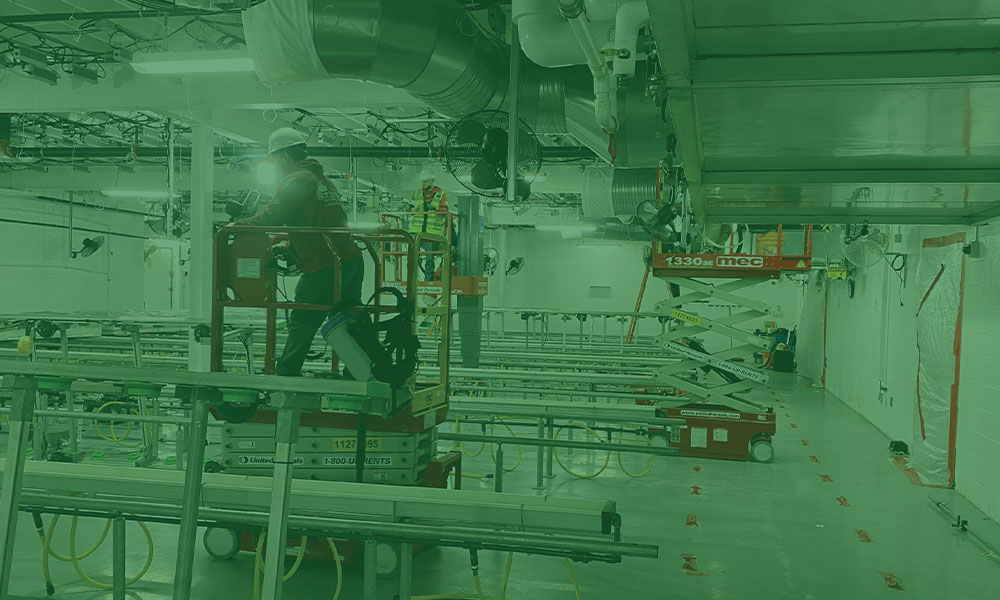
Using Compliant Methods
Working inside cannabis cultivation facilities has its own set of unique challenges. Each state has its own set of rules and regulations that include specific allowance levels for contaminants and pesticides. Many chemistries used for commercial cleaning applications to target mold or bacteria aren’t safe options to use inside cannabis facilities or around a high-value crop. The off gassing of these chemicals into a cannabis facility can cause the crop to fail lab testing for pesticides. Employee safety is paramount during facility decontamination. Keeping the employees safe and keeping the facility consistently generating income are the main focuses while Canna Klean & Remediation works inside of a facility.
Maintaining a clean environment and utilizing best practices keeps the levels of contaminants in the environment handcuffed and manageable. It’s not just about decontaminating the facility and moving on; it’s also about the continued maintenance of the space that keeps a facility clean and passing its lab tests. A healthy cultivation environment generates consistent revenue. Routine environmental sampling, including air quality assessments, surface swabs, tape lifts, water quality evaluations, media testing and input testing are becoming standards in large-scale cannabis production operations.
Mold and microbial contaminations don’t go away on their own. To win the battle against invisible enemies, it’s necessary to use a process designed to eliminate distinctive species using chemistries and techniques that target the contaminants. Canna Klean & Remediation developed a process that is backed with a guarantee to eliminate the contamination inside of a cannabis cultivation facility and bring the space back to better than pre-contamination levels.
If your organization is experiencing repeated flower lab test failures, reach out to Canna Klean & Remediation at 877-907-0160 or visit cannaklean.com.



